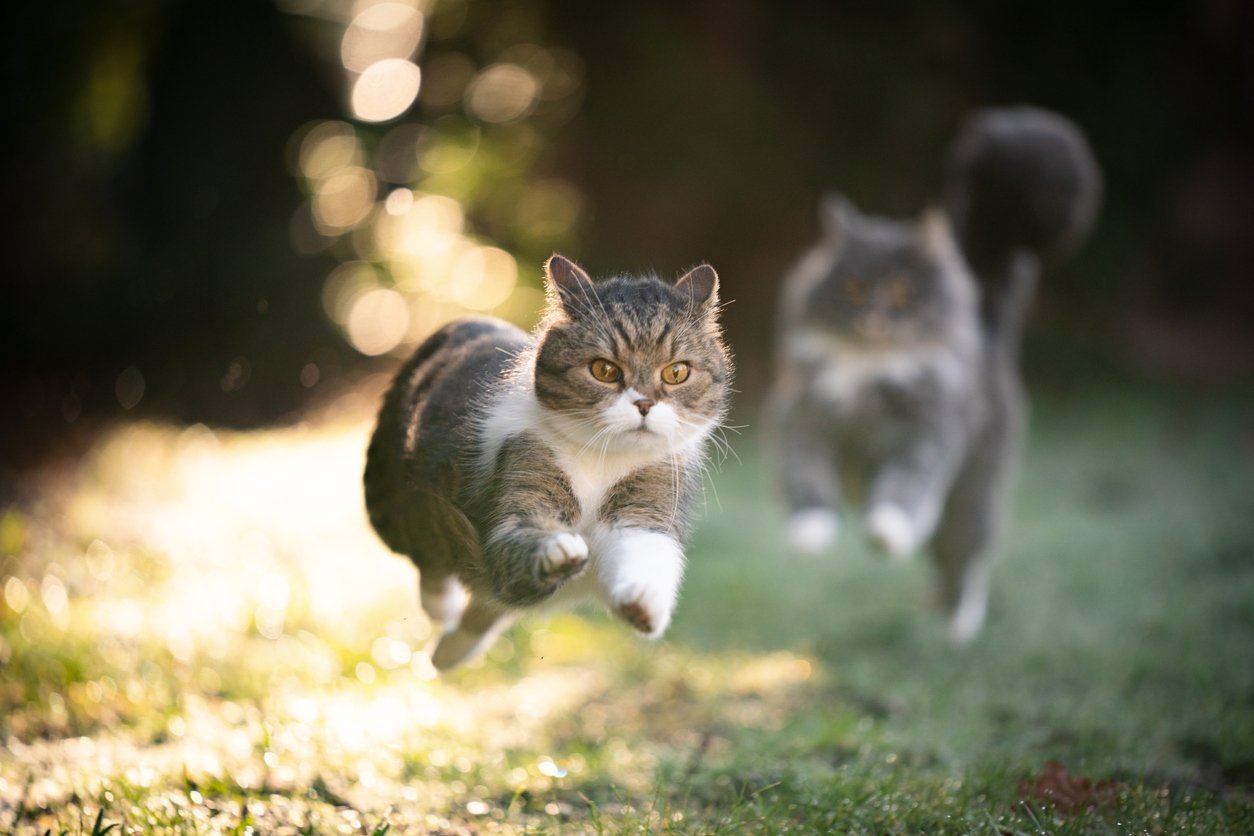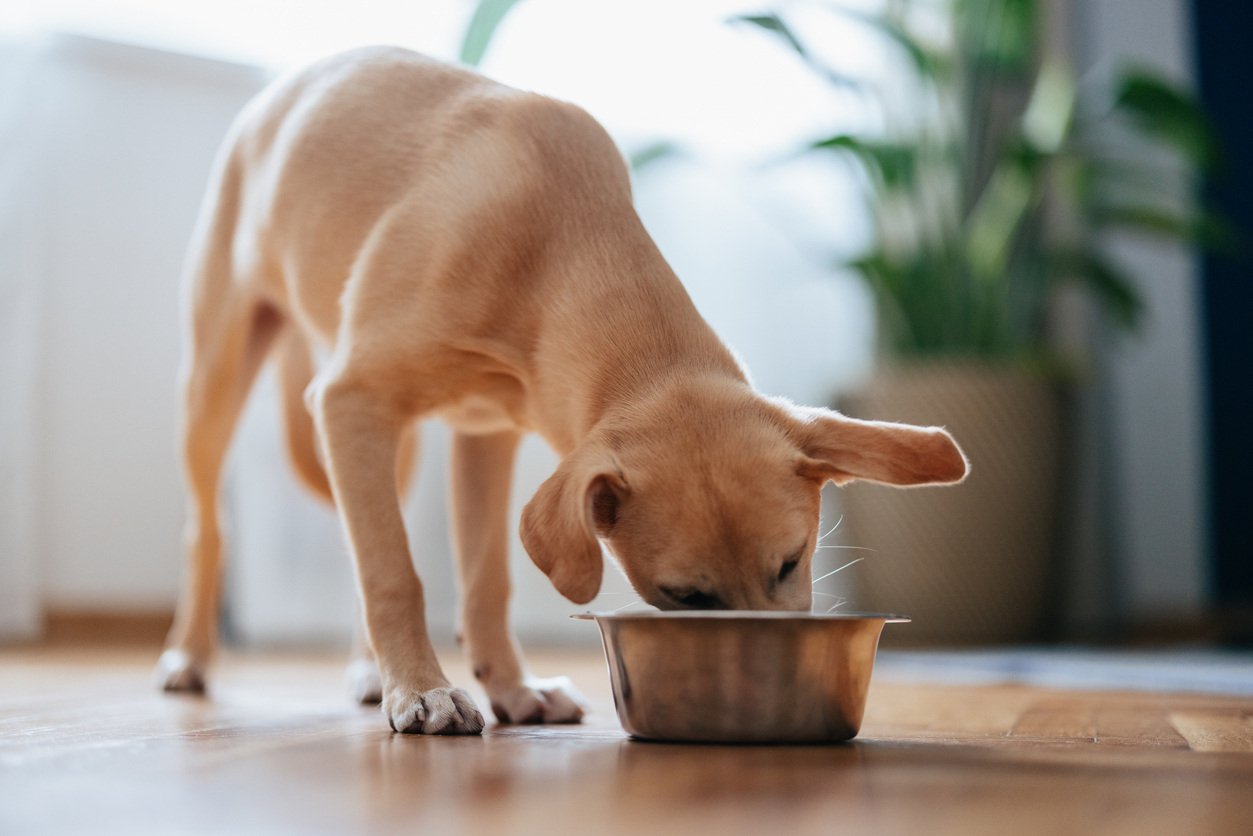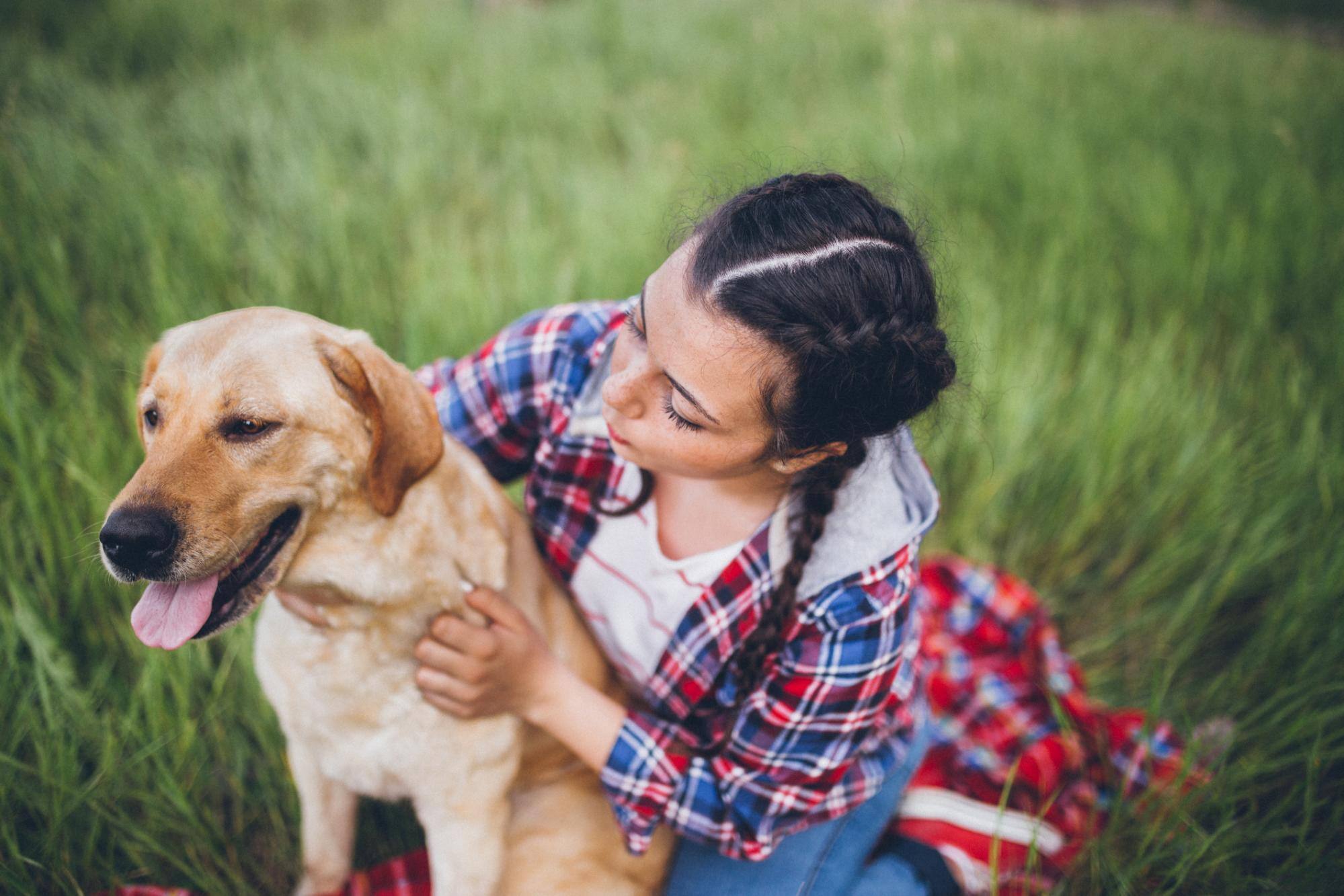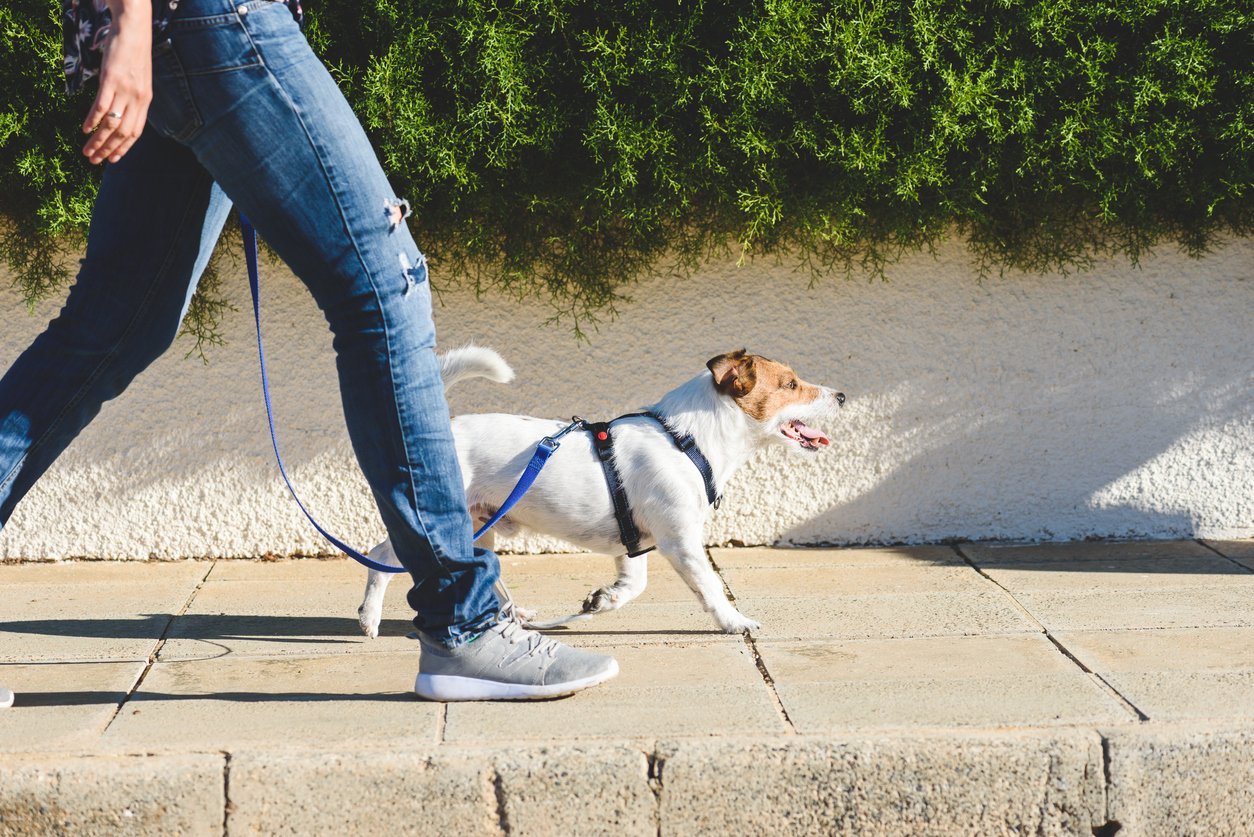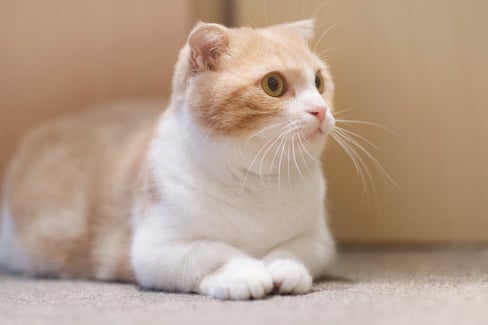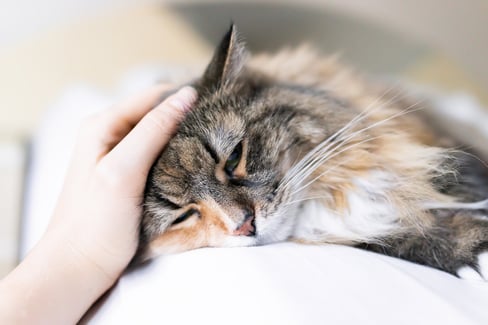Table of Contents
You know that it’s important to promote the health of your cat’s musculoskeletal system.
Since, you know, the skeleton supports your cat’s entire body and allows it to do all its favourite cat activities, from cuddling with you to chasing a ball of yarn.
But you don’t know the first thing about maintaining cat bone health.
And you’re really tired of referring to multiple sites to get the facts you’re looking for.
Take a deep breath because you’ve come to the right place. We’ve got all the information you need about cat bones in one post, so it’s going “tibia” okay from here on out.
We’re about to uncover five secret ways to maintain strong cat bones, as well as some common cat bone health conditions.
Ready to get to the bottom of cat bones once and for all? Then let’s go!
Intro to Cat Bone Health
As surprising as it may sound, bones are actually living tissue. They contain blood vessels and a substance called bone marrow, which supports the development of red blood cells.
Hard to believe that’s the case when you’re looking at the thing you give to your dog as a treat, huh?
Since bones are organs, it makes sense that maintaining proper bone health is key to ensuring the longevity of your pet.
This is significant because your cat has a lot of bones to keep healthy!
The number of bones in a cat differs depending on the length of a cat’s tail, but ranges from 230 to 250 bones, with an average of 244.
So, what do cat bones do, exactly?
We’re going to discuss their function and anatomy next!
The Function of Cat Bones
Let’s dig up some dirt on the function of cat bones.
Cat Bones Diagram
If you take a look at the cat bones diagram below, you’ll notice that a lot of these bones have similar names to human bones.
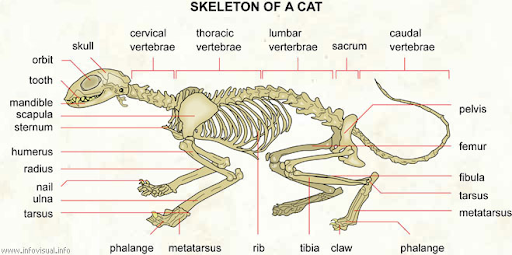
That’s because cat bones are surprisingly similar to human bones, serving many of the same functions:
- Allowing your cat to move, along with the help of muscles, tendons, and ligaments
- Providing a support system for your cat’s muscles (and body as a whole)
- Protecting internal organs aiding in your cat’s movement
In essence, your cat’s skeleton provides a foundational framework for the rest of its organs.
Cat Anatomy Bones
As part of your cat’s skeletal framework, its bones have different shapes and sizes. Each one has a particular name and falls into a particular cat anatomy bones category based on its shape:
- Flat bones
- Long bones
- Short bones
- Sesamoid bones
- Irregular bones
These different shapes allow your cat’s body to move in particular ways. For example, cat leg bones are made from long bones so your cat can walk around, while the skeleton is made up of irregular bones. These irregular bones allow your cat to arch its spine or make those epic jumps.
Depending on where the bone is located and its overall function, bones fall into one of the following three subunits of the skeleton:
- Appendicular skeleton: limbs, pelvis
- Axial skeleton: skull, backbone, ribs
- Visceral skeleton: bones that aren’t connected to your cat’s skeleton but makeup part of an organ (in cats, the only visceral bone is the penis)
Each of these subunits has a particular function, from providing a supporting backbone (axial skeleton) to allowing your cat to walk around (appendicular skeleton).
Cat Bones Related Health Issues
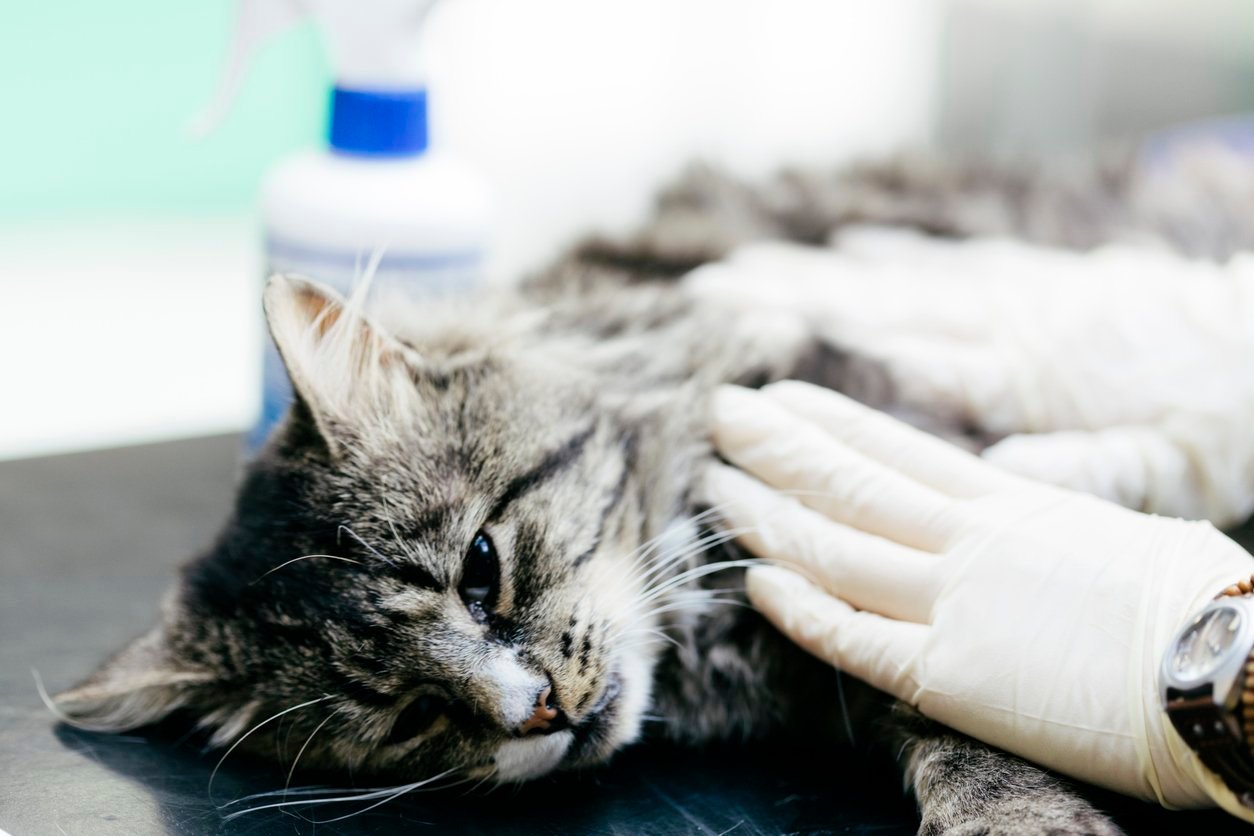
Now that you’ve gotten a feel for the form and function of cat bones, let’s take a closer look at some related health issues. You can’t defeat the enemy of healthy bones if you don’t know what it is, after all.
1. Bone Fractures
One of the more common cat bones issues is a bone fracture, which is just a fancy way of describing a broken bone.
Cat bone fractures are often caused by accidents, such as getting hit by a car or falling from a high place. In fact, cats falling and getting injured is so common that there’s even a term for it: feline high-rise syndrome.
If your cat has fallen or gotten into another accident and you suspect a bone fracture, you should call a vet immediately, as this is considered a medical emergency. Some of the symptoms of a bone fracture are listed below:
- Swelling
- Limping
- Hiding
- Dangling limb
- Meowing or whimpering
The cause of your cat’s bone fracture will also influence whether it’s considered an open or closed fracture.
- Open fractures: break in the skin (wound) associated with injury
- Closed fracture: no open wound
Certain health conditions may make your cat more likely to develop a bone fracture. For example, being overweight or having a nutritional deficiency makes cat bones weaker. As a result, when your cat finds herself in a sticky, bone-breaking situation, she may be less likely to walk away unscathed.
The best way to prevent a cat bone fracture is to create a safe environment for your pet. That means you shouldn’t let your cat sit on your balcony or go outdoors unsupervised, where she may be more prone to “exploring” and accidentally using up one of her nine lives.
Similarly, feeding her a balanced diet to avoid nutritional deficiencies is a great way to promote strong cat bones and reduce the likelihood of a fracture.
2. Bone Tumors
Ah, the dreaded word nobody wants to hear: cancer.
Unfortunately, cats may develop cancerous tumours in their bones, which often arise without a prior known cause.
There are four different types of bone tumours:
- Osteosarcoma
- Chondrosarcoma
- Fibrosarcoma
- Hemangiosarcoma
Osteosarcoma is the most common, accounting for 95% of all bone tumours, and is a type of malignant tumour (cancer) that mostly affects long bones in the legs.
Fortunately, bone tumours are unlikely to undergo metastasis, where they spread to other parts of the body.
Unfortunately, there’s not much you can do to prevent bone tumours, and amputation is often required as a treatment.
Feeding your cat a balanced diet, encouraging exercise, and making regular trips to the vet can help promote overall health and possibly reduce the likelihood of developing a tumour.
3. Brittle Bone Disease
Fortunately, this next cat bones health issue is fairly rare.
But we’re still going to tell you a bit about it. Because the last thing you want is to not know your cat is suffering from brittle bone disease!
The scientific term for this condition is osteogenesis imperfecta. Brittle bone disease is caused by genes that affect collagen production.
The lack of proper collagen can cause your cat’s bones to become less flexible (read: brittle), hence the name.
Your cat may be suffering from this condition if she has any of the following symptoms:
- Broken bones and teeth
- Decreased bone mass and bone density
- Joint pain
Since this bone condition is genetic, it can’t be prevented.
But you can keep a lookout for signs and symptoms of brittle bone disease and take your cat to the vet if you suspect she’s suffering from this condition.
You or your vet can order a DNA test to determine whether your cat bones carry the gene abnormalities that facilitate the onset of this condition.
4. Bone Infections (Osteomyelitis)
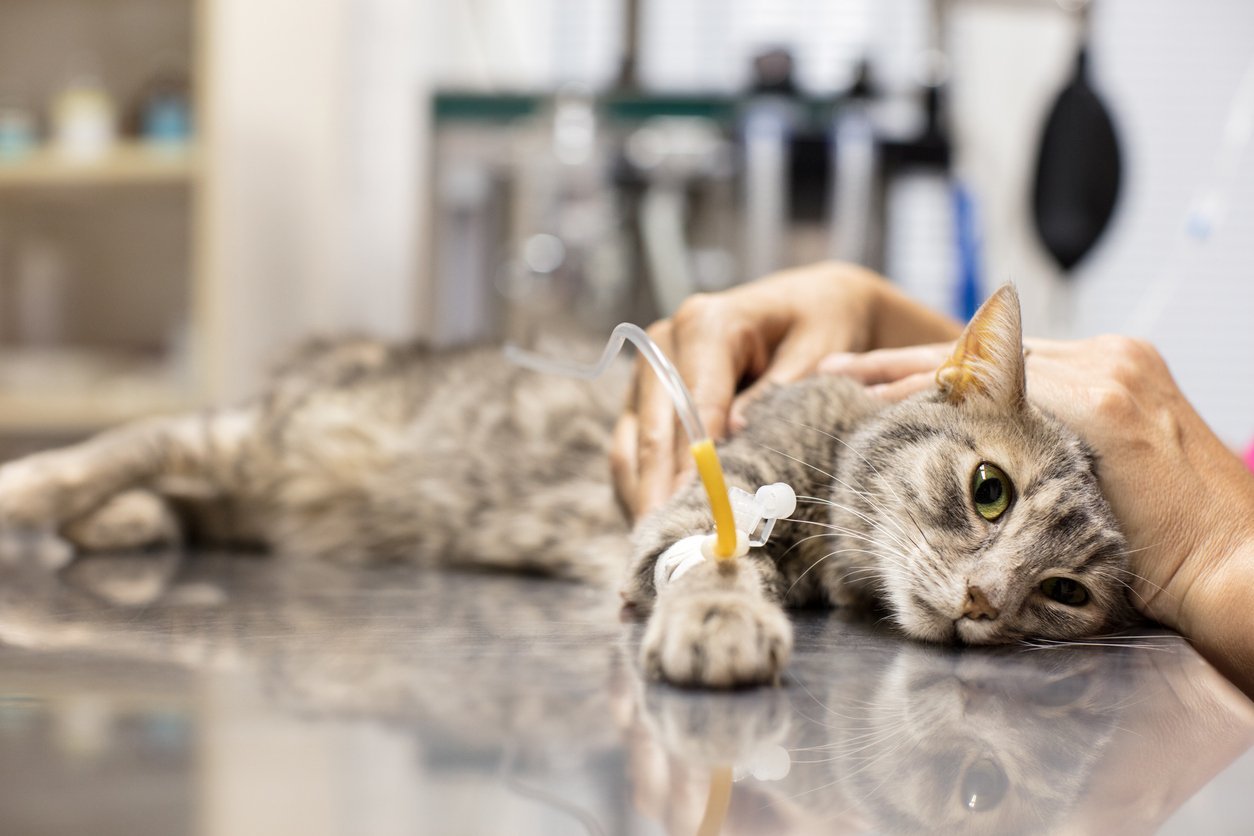
The thought of a cat bone infection sounds pretty clawful.
But unfortunately, they happen.
Osteomyelitis is a bone infection that results in the inflammation of cat bones or bone marrow.
This condition often occurs due to a bacterial infection but may also be caused by a fungal infection. Your cat’s bones may get infected after trauma to the bone, such as through an accident, or after surgery.
The following are symptoms of a bone infection:
- Lameness
- Lethargy
- Fever
- Swelling
- Signs of pain
If your vet suspects your cat has osteomyelitis, she’ll do a physical exam, order blood tests, and prescribe antibiotics to help treat the infection.
The best way to prevent this bone condition from forming is to keep your cat’s wounds clean, especially after surgery.
5. Osteoarthritis
Despite the belief that osteoarthritis only affects older cats, this condition can affect cats of all ages…
And it’s unfortunately very common.
Feline osteoarthritis is a degenerative joint condition that results from the wear and tear of the cartilage that cushions your cat’s joints.
This cartilage prevents your cat’s bones from grinding against each other when your cat moves. When the cartilage begins to wear away, cat bones may rub against one another, causing pain and inflammation.
Additionally, you may notice some of the symptoms listed below if your cat is suffering from osteoarthritis:
- Weight loss
- Poor grooming habits
- Changes in mobility
- Inability to jump
- Lethargy
So, how do you prevent and treat cat arthritis?
Unfortunately, once arthritis begins, it can’t be cured; however, there are certain actions you can take to help prevent it or manage the symptoms once they manifest.
First and foremost, you should aim to keep your cat at a healthy weight. Extra weight places more strain on your cat bones and joints, causing more wear and tear on the cartilage.
Feeding your cat a joint supplement is another great way to prevent and treat cat arthritis. We’ll talk more about this soon. In general, you should aim to find a supplement that has the following active ingredients:
- Glucosamine
- Chondroitin
- MSM
- Hyaluronic acid
Together, these substances promote joint health and help prevent some of the conditions that can end up affecting cat bones.
6. Osteochondrodysplasia
If you have a Scottish Fold, you’ll want to pay particularly close attention to this disorder, as it’s one that only occurs in this breed of cat.
Osteochondrodysplasia is a cat bones disorder caused by the same gene that gives your Scottish Fold the cute bend in her ears.
And while bent ears may make Scottish Folds look absolutely adorable, the gene that causes this trait has serious consequences on their bone health.
That’s because this genetic mutation affects the development of cartilage, which leads to severe arthritis.
The symptoms of this condition are listed below:
- Ears bending forward
- Reluctance to move
- Abnormal gait
- Lameness
- Chronic pain
Unfortunately, all Scottish Folds experience some level of osteochondrodysplasia because they all share the same gene that causes their ears to fold forward.
As a result, the best way to prevent this condition is to stop breeding Scottish Fold purebreds, as the condition causes debilitating pain.
Top 5 Ways to Maintain Strong Cat Bones
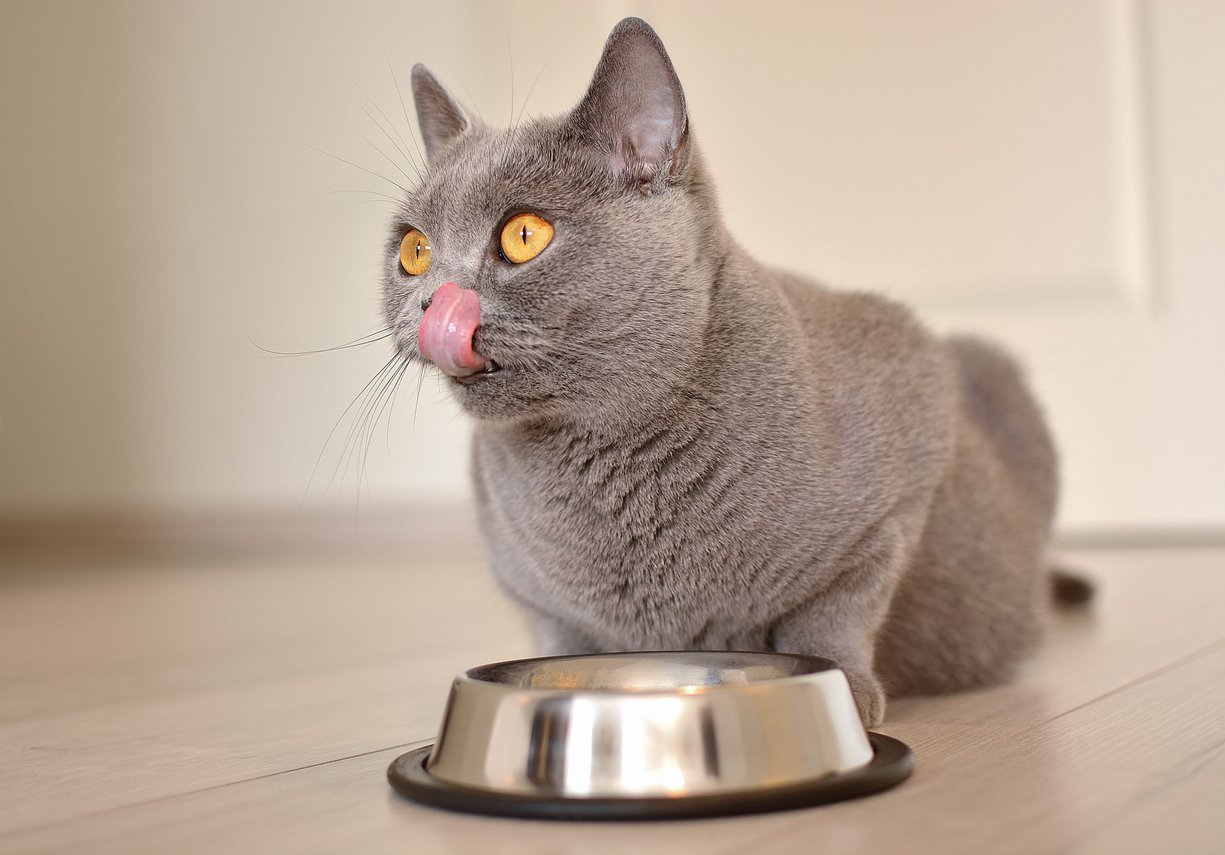
Now that you know about common cat bones disorders, let’s learn what you need to do to maintain bone health and reduce the likelihood of these conditions from occurring!
1. Feline Joint Supplements
Cat joint supplements have become increasingly popular as pet parents begin to realize their benefits in maintaining cat health.
That’s right: good joint supplements aren’t just glorified treats!
The active ingredients found in joint supplements can help fend off health conditions, like osteoarthritis, that affect cat bones and joints.
That’s because these ingredients help prevent cartilage deterioration, as well as reduce pain and inflammation.
Before choosing a joint supplement, it can be helpful to learn how to read a supplement label so you can ensure you’re choosing the best supplement to meet your cat’s needs.
In particular, you’ll want to find a supplement that contains the ingredients listed in the table below.
| Active Ingredient | Benefit |
| Glucosamine |
|
| Chondroitin |
|
| MSM |
|
| Hyaluronic Acid |
|
Additionally, your feline joint supplement should contain as little filler as possible to ensure maximum impact (and the best bang for your buck!).
TRI-ACTA for Pets and TRI-ACTA H.A. for pets are two great options if you’re looking to maintain or improve the health of cat bones because they contain the key active ingredients above… and no fillers.
“Bone” appetit!
2. Exercise
Don’t let your cat be a lazy bone. Exercise is an important part of maintaining strong cat bones.
That’s because regular exercise also supports your cat’s muscles and connective tissues, like tendons and ligaments.
- Tendons: connect muscle to bone
- Ligaments: connect bone to bone
Each of these body parts works in tandem with your cat’s bones to allow movement.
So by supporting these other parts of your cat’s body, you reduce the likelihood that your cat will suffer from health issues that impact cat bones, like bone fractures or arthritis.
When trying to introduce more exercise into your cat’s life, aim for about 30 minutes of exercise a day.
And try to make it fun! This will increase the likelihood that your cat will actually partake in the exercise.
- Leave toy mice or other cat toys around the house
- Use a feather wand to play with your cat
- Have your cat chase a laser light (trust us: they won’t need much encouragement)
If you’re feeling especially inspired, you can also learn how to train your cat to walk on a leash.
3. Balanced Diet
It’s the foundation of every healthy animal: a balanced diet.
A healthy diet keeps your cat’s bones strong for two primary reasons:
- It helps keep your cat at a healthy weight.
- It provides vital nutrients to support bone health.
You may be wondering what weight has to do with strong cat bones.
Well, keeping your cat at a healthy weight is especially important because overweight cats are more likely to develop conditions like osteoarthritis due to the additional strain placed on their bodies.
And this is pretty significant since 57% of cats are estimated to be overweight in the United States.
Feeding your cat a balanced diet helps prevent weight gain while also providing important vitamins and minerals.
One way you can provide these vital nutrients is through a raw food diet (just be sure to consult with your vet beforehand to make sure this approach will work for your cat).
And what are these vital nutrients that we keep mentioning? Let’s find out next.
4. Vitamins and Minerals
Your cat needs a proper mix of vitamins and minerals in order to maintain healthy cat bones, just like you do!
In particular, calcium, phosphorus, magnesium, and vitamin D are especially important when it comes to supporting bone health.
The table below outlines what each of these vitamins and minerals does to maintain strong cat bones.
| Vitamin/Mineral | Benefit to Cat Bones |
| Calcium |
|
| Phosphorous |
|
| Magnesium |
|
| Vitamin D |
|
Most cats are able to obtain these nutrients through their food.
But it may be necessary to supplement your cat’s food with vitamins or minerals if they have a deficiency.
Before feeding your cat a vitamin, you should always check with your vet. Your cat may suffer from things like Vitamin D poisoning if you feed them too much of a certain nutrient.
That’s because some vitamins are fat-soluble, so they can accumulate in your cat’s body in toxic amounts.
5. Vet Appointments
We know, we know. Nobody likes to go to the doctor, least of all your cat.
But even if she sulks for days later, taking your cat to the vet on a regular basis is a key way to promote strong and healthy cat bones.
Why is that?
Well, your vet can identify when your cat’s body isn’t moving quite as it should be, as well as provide an opportunity to discuss any changes to your cat’s behaviour that may indicate an underlying health condition.
Your vet can also offer that outside opinion pet parents sometimes need to hear: the extra pounds you think are so cute are really unhealthy for cat bones.
Finally, vet appointments allow you to ask questions that can help you determine how to take care of cat health overall.
You should aim to bring your cat in for a check-up once a year if she is young or middle-aged. For senior cats, twice a year is better, since older cats are more prone to developing conditions, like vitamin deficiencies, that can lead to bone health problems down the line.
FAQs on Cat Bones
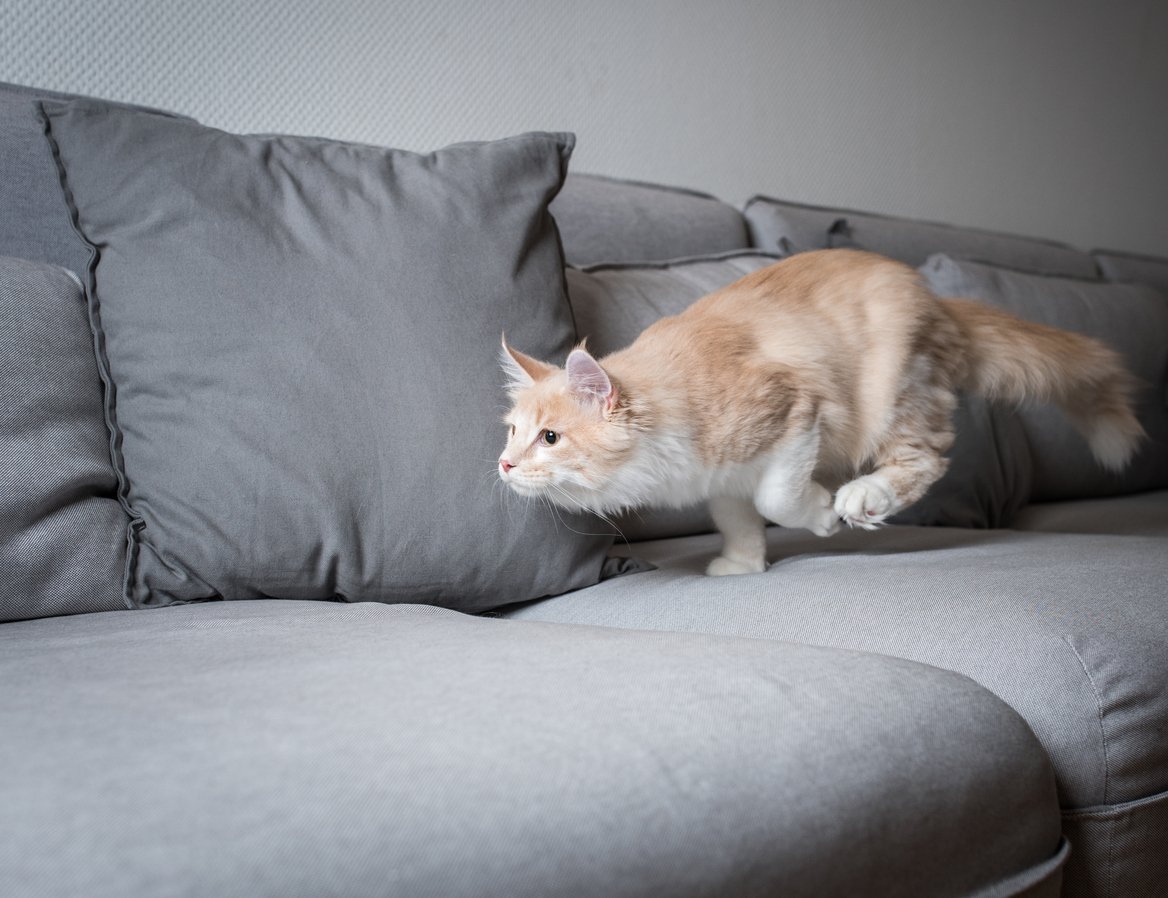
How can you tell if a cat’s leg is broken?
If your cat has a broken leg, she will likely have at least one of the noticeable signs or symptoms we discussed above. Your cat may be vocal while in pain, or she may avoid putting any weight on the broken limb.
Call your vet immediately, as broken bones are considered a medical emergency. Your vet will perform an x-ray if she suspects your cat has a broken leg.
How many bones are in a cat’s leg?
There are three major cat leg bones. The bones differ slightly depending on whether they are in the front or back of your cat’s body. In the forelegs, the major bones are the humerus, ulna, and radius. In the back legs, the major bones are the femur, tibia, and fibula.
Are bones safe for cats?
If you have a pet dog, you may be wondering if you can feed your cat a bone as well. And you can! Feeding your cat small (and raw) bones, like from a chicken, can help promote your cat’s oral and dental health.
But please keep in mind that you should never feed your cat a cooked bone. This is because they can splinter and cause internal blockages that may be fatal. Additionally, don’t feed your cat a raw bone more than once or twice a week.
Summary
We know that was a whirlwind of information.
But hopefully, now you have all the knowledge you need to help support healthy cat bones. You can identify cat bone health conditions, and you even know the top five secrets to maintain strong cat bones.
From feeding your cat a healthy diet to encouraging exercise, you can help prevent common bone disorders while promoting your cat’s overall health.
And one of our favourite ways to do so is feeding your cat a joint supplement, like TRI-ACTA for pets and TRI-ACTA H.A. for pets.
Find out where to buy these supplements and check out our blog for even more information about cat health!
Newsletter Signup
Subscribe to our newsletter to receive the latest news and exclusive offers.
.jpg?height=2000&name=Cliick_Integricare-DISPLAY-REVISEDV2%20(1).jpg)
Proactive & Therapeutic Joint Supplements
When given daily, Integricare joint supplements recover bone and joint injuries faster and help prevent mobility injuries from happening in the first place.

